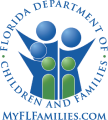As naloxone, a medication that reverses an opioid overdose, has gained more publicity, doctors are being urged to prescribe it as a preventive measure to patients who are also given narcotic painkillers. The thought behind this is that the risk for overdose is so great that even patients who do not abuse these drugs are at risk of this possibility.
However, some doctors rejected this idea. The fear was that their patients would be offended if given a prescription made popular by its use on heroin addicts. The survey, however, showed different results.
“Some providers have voiced concern that prescribing naloxone to patients could result in negative patient reactions. We found that this was rare. Even among the few with a negative initial reaction, all but one patient still wanted naloxone again in the future,” explained Dr. Phillip Coffin, a co-author on the study.
Doctors are placed in a difficult position. They are required to treat patients to the best of their ability, though there is still the human element of additional thoughts and feelings. Oftentimes doctors may agree with a decision like prescribing naloxone to painkiller user in theory, but they have to weigh that decision with the potential backlash of offended patients. And while the survey shows that patients are generally not offended, the question still looms for many of them.
This hesitation is even more important when one looks at the origins of the prescription painkiller problem today. When the epidemic was still in its infancy, most doctors were not educated enough on the potential for dependency and abuse, and nobody was prepared for the levels of addiction that ensued. By the time the full ramifications were realized as a nation, it was too late.
Since then, the medical community has increased its efforts to minimize the amount of harm caused by opioids. Doctors are now being required to enroll in more addiction education classes, limits are being placed on the number of pills that are given out in hospital emergency rooms, and prescription drug monitoring programs are being used more widely.








